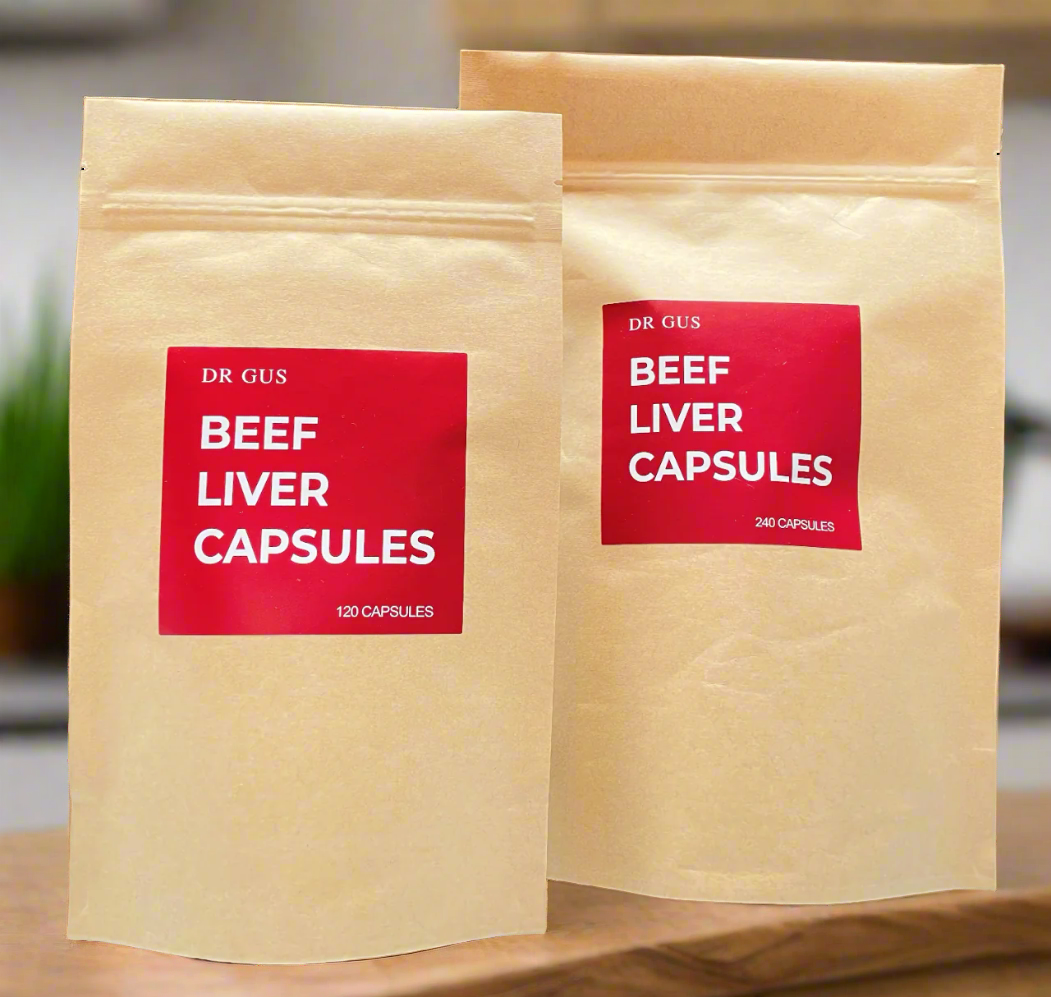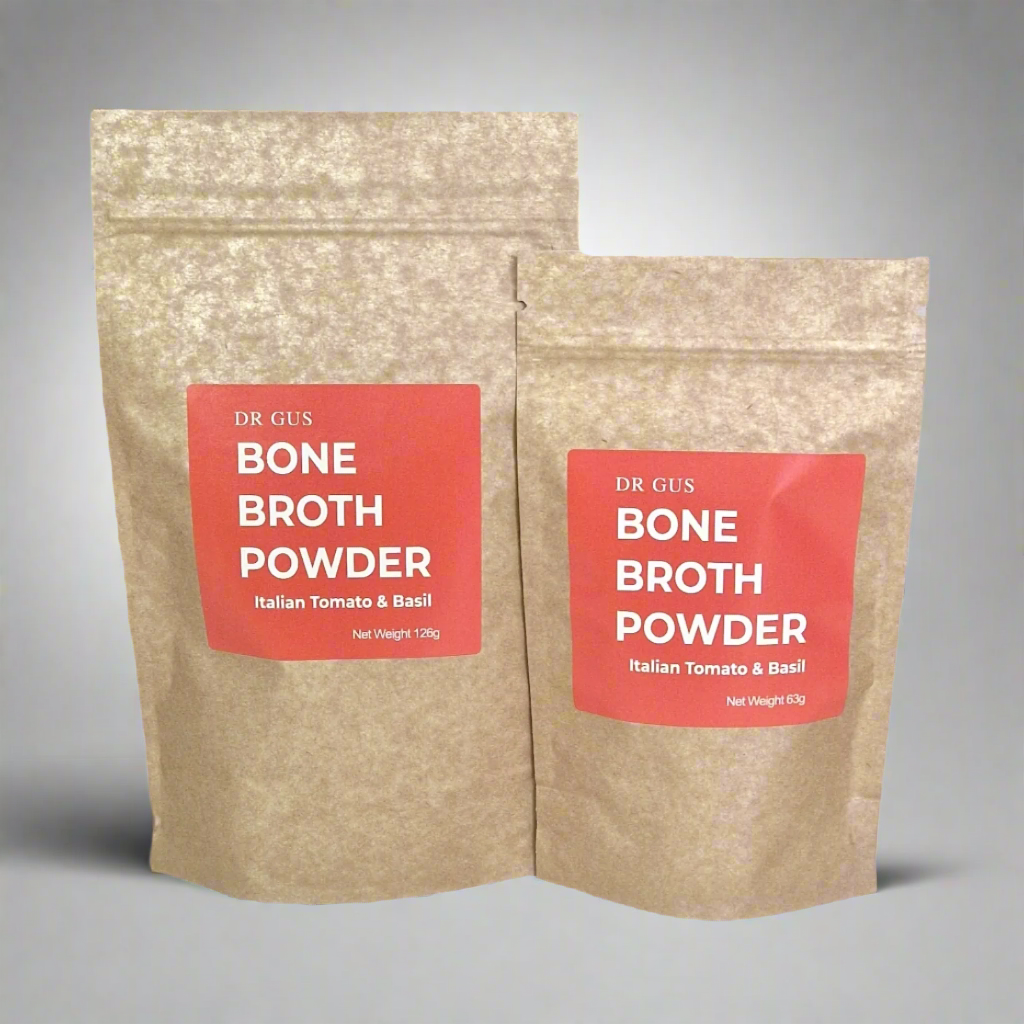Gut bacteria need a home!
August 15, 2017 3 min read
I keep being asked a lot if taking collagen supplements is the same as drinking bone broth. My answer is always yes and no. Yes because collagen powder will supply the same amino acids as bone broth, and no because there is much more to bone broth than the amino acids.
So today I will speak a little about one of the main benefits of bone broth for gut health. Bone broth is a rich source of proteoglycans (proteo – protein, glycan – sugar). Specifically N-acetyl glucosamine, N-acetyl galactosamine, hyaluronic acid and chondroitin. Proteoglycans are utilised in the body in many ways including cell signaling and metabolism through to cartilage formation and the formation of the many mucus linings of the inside of the body, including airways and lungs, and stomach, small and large intestines.
To be honest more work is required in this area but this paper was published in 2000:
A pilot study of N-acetyl glucosamine, a nutritional substrate for glycosaminoglycan synthesis, in paediatric chronic inflammatory bowel disease.
Author information
- 1
- University Department of Paediatric Gastroenterology, Royal Free, London, UK.
Abstract
BACKGROUND:
The breakdown of glycosaminoglycans is an important consequence of inflammation at mucosal surfaces, and inhibition of metalloprotease activity may be effective in treating chronic inflammation.
AIM:
To report an alternative approach, using the nutriceutical agent N-acetyl glucosamine (GlcNAc), an amino-sugar directly incorporated into glycosaminoglycans and glycoproteins, as a substrate for tissue repair mechanisms.
METHODS:
GlcNAc (total daily dose 3-6 g) was administered orally as adjunct therapy to 12 children with severe treatment-resistant inflammatory bowel disease (10 Crohn’s disease, 2 ulcerative colitis). Seven of these children suffered from symptomatic strictures. In addition, similar doses were administered rectally as sole therapy in nine children with distal ulcerative colitis or proctitis resistant to steroids and antibiotics. Where pre- and post-treatment biopsies were available (nine cases), histochemical assessment of epithelial and matrix glycosaminoglycans and GlcNAc residues was made.
FINDINGS:
Eight of the children given oral GlcNAc showed clear improvement, while four required resection. Of the children with symptomatic Crohn’s stricture, only 3 of 7 have required surgery over a mean follow-up of > 2.5 years, and endoscopic or radiological improvement was detected in the others. Rectal administration induced remission in two cases, clear improvement in three and no effect in two. In all cases biopsied there was evidence of histological improvement, and a significant increase in epithelial and lamina propria glycosaminoglycans and intracellular GlcNAc.
CONCLUSIONS:
GlcNAc shows promise as an inexpensive and nontoxic treatment in chronic inflammatory bowel disease, with a mode of action which is distinct from conventional treatments. It may have the potential to be helpful in stricturing disease. However, controlled trials and an assessment of enteric-release preparations are required to confirm its efficacy and establish indications for use.
It demonstrated that supplementing with proteoglycans significantly improved the condition of children with inflammatory bowel disease, including Crohn’s and ulcerative colitis. The mechanism was improved goblet cell mucus production and this was most pronounced in areas of strongest concentration before the body began to metabolise the supplements.
This study has important implications for everyone as 70% of the immune function resides in the gut, and the mucosal barrier is an important part of healthy immune function. In fact, autoimmune conditions seem to be preceded by mucus barrier breakdown before clinical symptoms or un-wellness present themselves.
An interesting side note is that pathogenic bacteria need carbohydrates to survive whereas commensal (healthy) bacteria can live on the mucus, so the take home message is cut down on the sugars and increase bone broth in the diet.
Explore our range of Premium Bone Broth Powder!
Thanks for reading.
Leave a comment
Comments will be approved before showing up.




